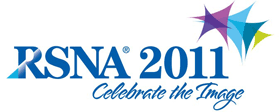
Abstract Archives of the RSNA, 2011
Laura A. Drubach MD, Presenter: Nothing to Disclose
David Zurakowski PhD, Abstract Co-Author: Nothing to Disclose
Edwin L Palmer MD, Abstract Co-Author: Nothing to Disclose
Donald A. Tracy MD, Abstract Co-Author: Nothing to Disclose
Edward Y. Lee MD, MPH, Abstract Co-Author: Nothing to Disclose
To evaluate the correlation between the findings on radionuclide salivagram and the presence of associated CXR abnormalities.
The institutional review board approved this retrospective study. 250 salivagrams and corresponding chest radiographs in 223 patients age 1 day to 21 years (median 2.6 years) consecutively performed between the years of 2004 and 2010 were retrospectively reviewed by 2 independent readers. The CXR was performed between 0 and 60 days from the salivagram. Salivagrams were reviewed blinded and classified as positive or negative for lung aspiration in the right and left lung. The CXRs were reviewed blindly and classified as with or without pulmonary disease. The kappa coefficient was used to measure interobserver agreement as well as agreement between salivagram and CXR results.
Of the 250 salivagrams, 62 (25%) were abnormal and 188 were normal. Interobserver agreement on interpretation of the salivagrams was high (kappa = 0.97). Aspiration was bilateral in 81% and unilateral 19%. If aspiration occurred unilaterally, it was in the right lung 83% of the time. CXR results showed good agreement with salivagram (kappa = 0.82, P<0.001) with 234 agreements out of 250 paired cases. Seven times salivagram was positive and CXR was normal. Among the 188 normal salivagrams, 179 (95%) were normal on CXR
Abnormal salivagrams show a high correlation with the presence of CXR abnormalities and negative salivagrams show a high correlation with the absence of CXR abnormalities. There was a strong correlation with unilateral aspiration and the presence of CXR abnormality in that lung. The salivagram is a useful study for excluding the need to further evaluate or treat for aspiration.
Salivagram should be performed early in patients at risk for aspiration in order to identify the potential for lung damage and allow early institution of medical therapy to reduce long term morbidity.
Drubach, L,
Zurakowski, D,
Palmer, E,
Tracy, D,
Lee, E,
Pediatric Pulmonary Aspiration: Correlation between Salivagram and Chest Radiographs. Radiological Society of North America 2011 Scientific Assembly and Annual Meeting, November 26 - December 2, 2011 ,Chicago IL.
http://archive.rsna.org/2011/11003581.html

